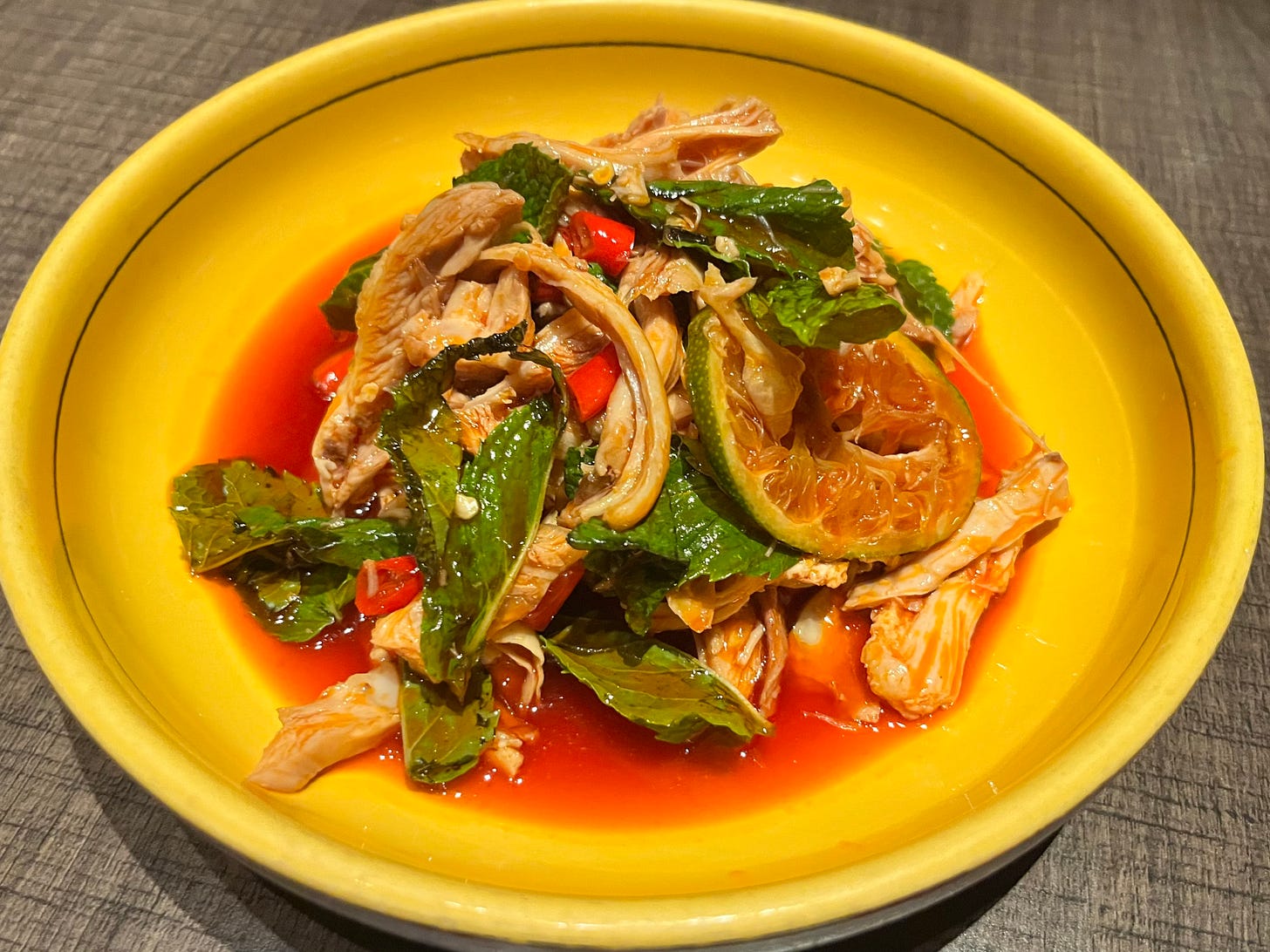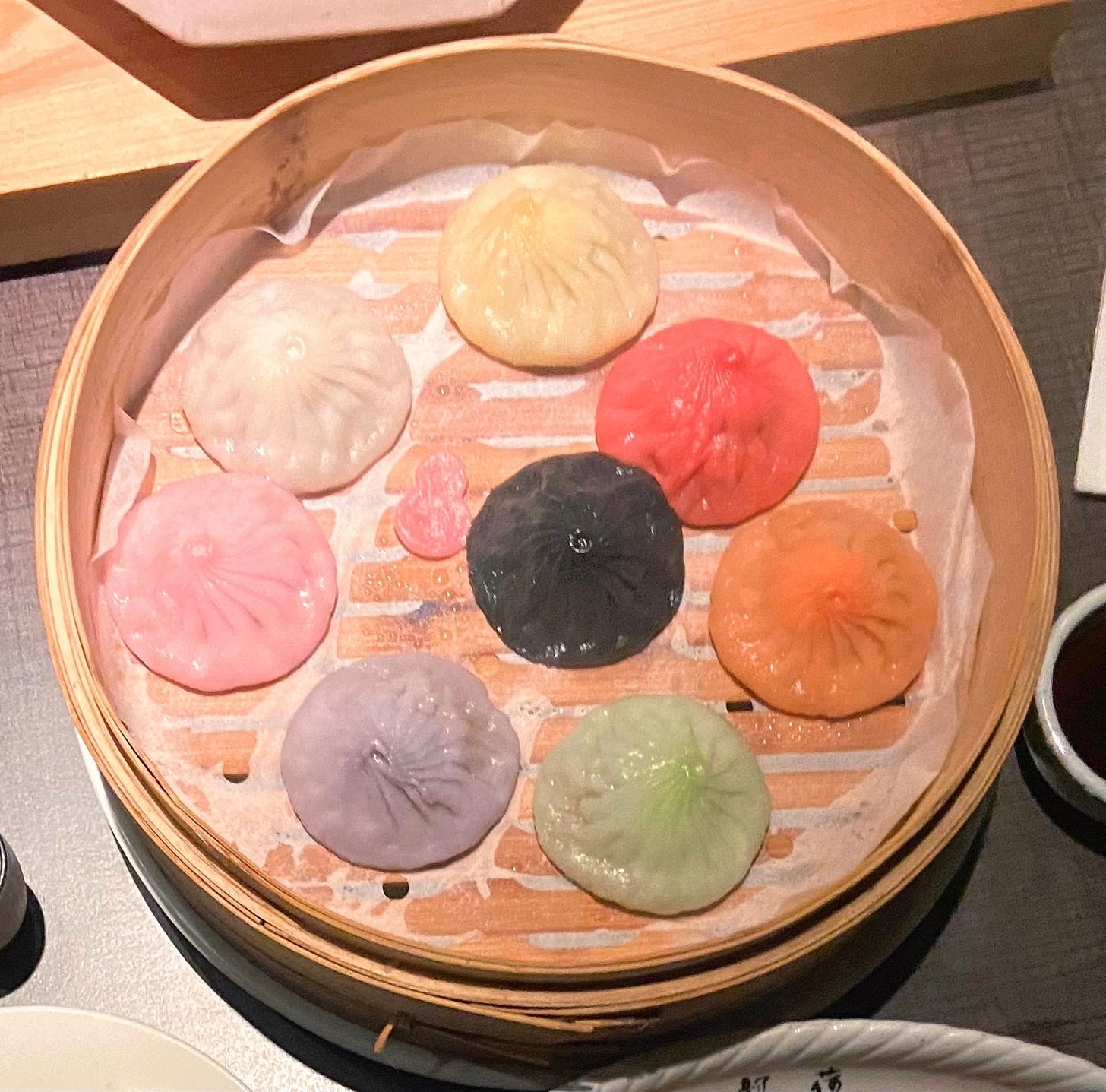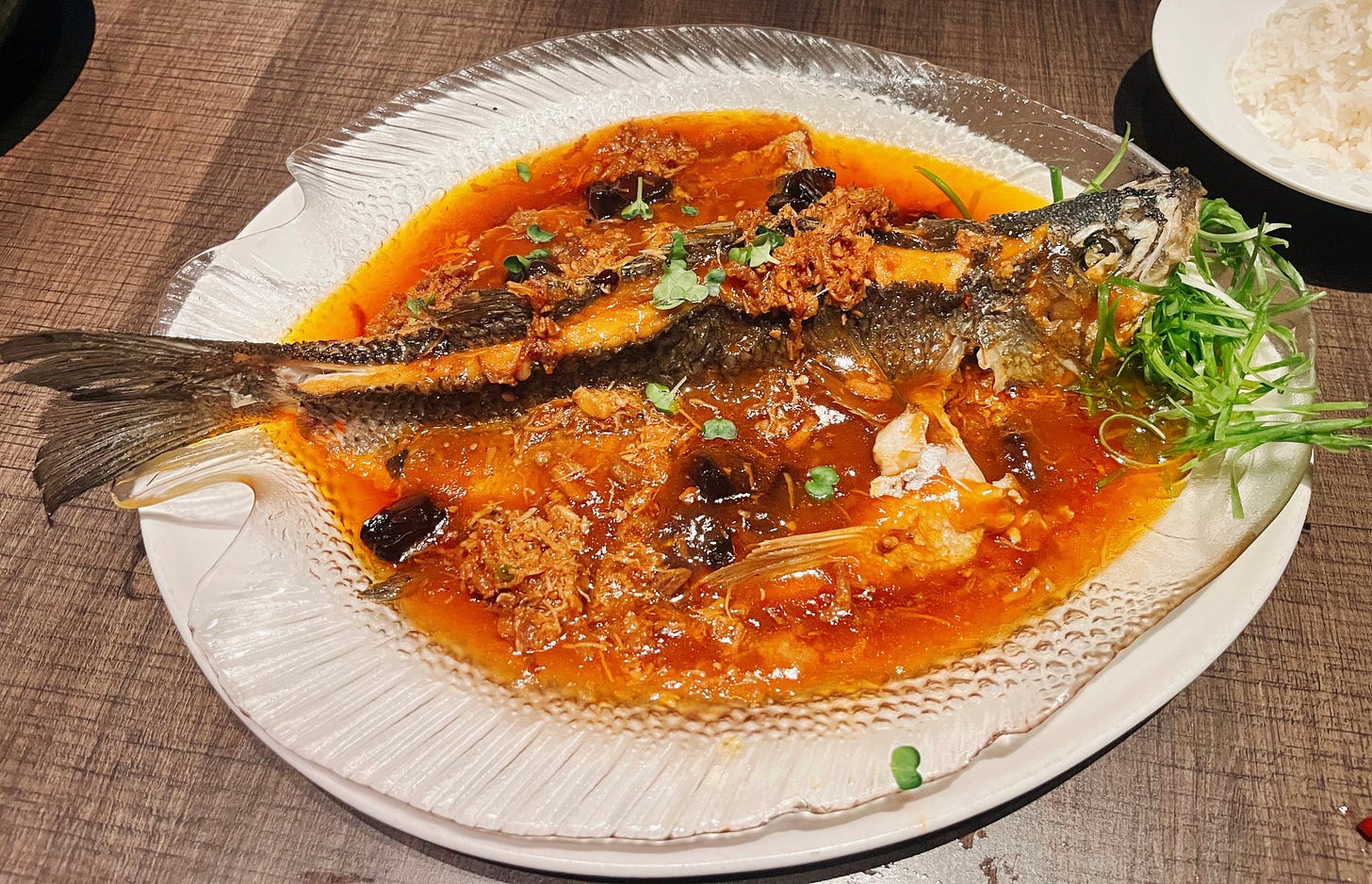but oftentimes better than a master of one.
uluh ↔ 葫芦 ↔ calabash
N.B. There are quite a few translations in this week’s review. Although Mandarin has long ceased to be my dominant language, it remains my mother tongue, and I still use it to conceptualize certain things1. To remain faithful to my initial impressions, and to more precisely convey them to Mandarin speakers, I’ll occasionally interpolate Chinese characters followed by their English equivalent approximation2.
cal·a·bash
noun
a vine cultivated for its globular fruit, which can either be consumed as a vegetable (if harvested early) or dried and hollowed out for use as a vessel (if harvested mature). In Chinese culture, calabash is considered auspicious due to its traditional function as a container for transporting water and medicine.
The namesake Chinese restaurant and teahouse in East Village.
It’s hard to get more specific than that, because the sprawling menu encompasses regional dishes ranging from Peking duck and Sichuanese dry pot to Shanghainese soup dumplings and Cantonese dim sum. In achieving this breadth, Uluh inevitably sacrifices some depth; unlike, say, the Korean eatery Okdongsik, it isn’t the sort of restaurant you frequent for one or two signature items, and I can’t point to any one standout dish even after multiple visits. And yet the restaurant maintains a certain level of quality and consistency across its vast offerings that can’t be understated. For this, and other reasons I’ll elaborate on later, I consider Uluh part of the East Village trifecta3 of Chinese cuisine—restaurants I return to again and again in a city whose plethora of food options disincentivizes patronage.
For the sake of linguistic economy, I’ll circumscribe my discussion to one or two dishes from the sections of the menu I’ve tried.
Small Plates
The green peppercorn chicken is one of the dishes that hews most closely to Uluh’s self-styling as a restaurant “[providing] a modern edge to traditionally crafted dishes.” The chicken is juicy and tender, but used sparingly—a prudent move that brings the interleaved mint and lime to the fore. The cooling effect of menthol and citrus, juxtaposed with the slightly numbing heat of the peppercorn (麻辣), produces a mouthfeel that I would render in Mandarin as 清爽—refreshing. I could have multiple plates of this chicken without getting sick of it, which is my highest endorsement.
green peppercorn chicken
I enjoyed the uluh sticky rice cube with duck, but the small cubes are deceptively filling; it’s a decadent dish best consumed in moderation. Texturally, the dish was on point: the sticky rice was just the right amount of chewy. Taste-wise, the duck could have featured more prominently, but the XO sauce (a slightly spicy seafood sauce from Hong Kong) added some much-needed flavor.
uluh sticky rice cube w. duck meat
Dim Sum
colorful soup dumplings
The following are my acceptance criteria for soup dumplings (小籠包):
Paper-thin skin
Generous amount of pork filling
Savory, gelatinous broth, which should not appear/feel too oily
Uluh’s XLB were middling, and the rainbow color scheme felt like a half-baked distraction. They fulfilled the third (and arguably most important) criteria, but I think the filling could have been more substantial, and the skin was a bit too thick.
Signature
Weighing in at two pounds, this striped bass—prepared in whole—makes for a visually impressive dish. The fish was succulent, particularly near the spine, and the portions substantial. However, I felt that the consistency of the garlic sauce was a bit too viscous, reminiscent of potato starch, and lacked the complexity needed to elevate a decently-executed (if a bit too on-the-nose—I mean, serving a fish on a fish-shaped platter is basically an optical pleonasm) traditional dish to the next level.
braised black garlic striped bass
Spicy
fish in green peppercorn
The málà flavor, whose characteristic numbing sensation starts in the tongue and lips and slowly radiates, might be polarizing—but whether you love it or hate it, few would deny that it completely clobbers the senses. As such, I find málà dishes to be pretty uniform across the board, and this one is no exception. If I were in the mood for Sichuan food and happened to find myself at Uluh, I’d have no qualms about ordering this dish, but it’s nothing to write home about.
Vegetables
Stir Fried Cabbage w. Glass Noodle: loved the gelatinous texture of the glass noodles paired with the crunch of the cabbage.
Sautéed Pea Shoot w. Garlic: pretty classic but cooked the way it should be, with lots of oil.
Soup
Steamed Chicken Soup w. Red Dates: I have high standards for this dish, which is prized in Taiwan for its potent health benefits; even so, I think Uluh’s chicken soup could easily hold court there. While the chicken was a bit dry, the soup was hearty and comforting to drink; the sweetness of the red dates and goji berries coupled with the musky undertone of longan tasted like home.
I don’t think Uluh quite delivers on its promise to introduce a fresh perspective to traditional Chinese dishes. Nevertheless, it does a great deal, and does it reasonably well—in the words of my dad, 不容易踩雷 (lit. it’s not easy to step on a minefield). Judging by the consistently long wait times and no-reservation policy in a city that revolves around dinner reservations, I’m not the only one who views Uluh as a mainstay of East Village dining. But competence doesn’t explain its staying power, and I’ve spent a non-trivial amount of time trying to triangulate the appeal of this restaurant.
I think the answer lies in its identity as a teahouse4, which extends beyond tea into a reification of leisure—a repudiation of the harried New York ethos, that obsession with arrival times and the compulsion to jaywalk even when you have nowhere to be. For that alone, I’ll always have a special fondness for Uluh.
like kitchen utensils and matters of the heart
slippage of meaning and all that
the other two are CheLi and Szechuan Mountain House
Uluh’s extensive tea collection is next on my to-try list









